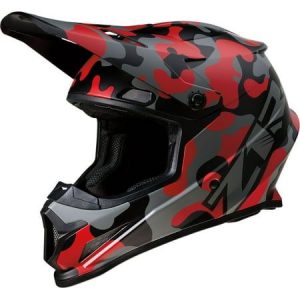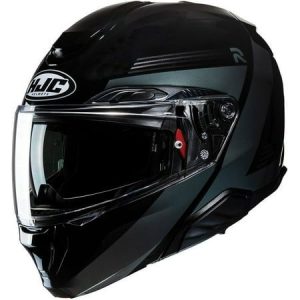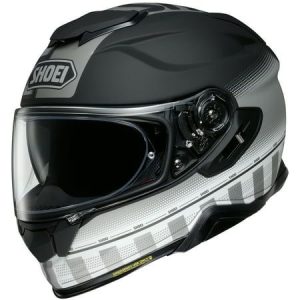Your motorcycle helmet is your lifeline on the road. It’s the crucial barrier between you and the pavement in a crash, and a properly maintained helmet can significantly improve your odds of walking away unscathed. But unlike other motorcycle gear, helmets don’t last forever. Knowing when to replace your motorcycle helmet is vital for ensuring optimal safety.
This comprehensive guide dives into the factors that influence helmet lifespan and provides clear guidelines on how often you should replace your motorcycle helmet.
Understanding Helmet Materials and Their Degradation
Motorcycle helmets are typically constructed from two main components: an outer shell and an inner liner.

-
Outer Shell: The outer shell is usually made of a high-impact plastic material, such as polycarbonate or thermoplastic resin. This hard outer shell absorbs the brunt of the impact in a crash, distributing the force over a larger area and minimizing injury to the rider’s head.
-
Inner Liner: The inner liner is composed of energy-absorbing materials like expanded polystyrene (EPS) foam. This liner compresses upon impact, dissipating the remaining energy and protecting the rider’s head from blunt force trauma.
However, these materials are not invincible. Over time, with use and exposure to the elements, the outer shell can become brittle and lose its impact-resistant properties. Similarly, the EPS foam in the inner liner can harden and lose its ability to effectively absorb energy during a crash.
Factors Affecting Motorcycle Helmet Lifespan
Several factors contribute to how long your motorcycle helmet will last safely. Here are the key considerations:

-
Frequency of Use: The more you use your helmet, the faster it will degrade. Frequent exposure to sunlight, wind, rain, sweat, and cleaning products can accelerate the breakdown of materials.
-
Age of the Helmet: Even if rarely used, a helmet’s materials naturally degrade over time. Manufacturers typically recommend replacing helmets after a specific period, regardless of usage frequency.
-
Accidents or Drops: Any impact, even a minor drop, can compromise the helmet’s structural integrity. If your helmet has been involved in an accident or a significant fall, it’s crucial to replace it immediately, even if there’s no visible damage.
-
Climate: Extreme temperatures can accelerate the degradation process. Helmets exposed to excessive heat or cold may experience faster material breakdown.
Replacing Your Motorcycle Helmet: Safety First
While there’s no single definitive answer to how often you should replace your motorcycle helmet, most manufacturers recommend a replacement timeframe of 5 years. This recommendation applies to helmets used regularly, with the frequency of use directly impacting lifespan.
Here are some additional guidelines to consider:

-
Heavy Use (Daily Riding): If you ride your motorcycle daily or frequently, consider replacing your helmet every 3-4 years. The increased exposure to the elements and wear and tear will accelerate material degradation.
-
Occasional Use (Weekend Rider): For riders who use their helmets less frequently, a 5-year replacement cycle is generally recommended. However, pay close attention to the condition of the helmet and replace it sooner if you notice any signs of wear or damage.
-
Visible Damage: Regardless of age or usage, replace your helmet immediately if you see any cracks, deep scratches, loose components, or excessive wear on the liner or padding.
Safety Shouldn’t Be a Gamble: Signs It’s Time for a New Helmet
Even if your helmet hasn’t reached its recommended replacement age, there are certain signs that indicate it’s time for a new one:
-
Loose or Worn Padding: The inner liner should feel snug and supportive. If the padding feels loose, compressed, or worn, it’s no longer effectively absorbing impact.
-
Difficulty Fastening Chin Strap: A properly functioning chin strap is crucial for keeping the helmet secure in a crash. If the chin strap becomes frayed, worn, or difficult to fasten, replace the helmet.
-
Sticky or Brittle Outer Shell: The outer shell should feel smooth and slightly flexible. If it feels sticky, brittle, or shows signs of cracking, it’s compromised and needs replacing.
-
Excessive Noise: An old helmet with a worn-out liner may allow more wind noise to enter. This can be a sign that the liner is no longer effectively absorbing vibrations.
Invest in Your Safety: Don’t Compromise on Quality
Replacing a motorcycle helmet can feel like an expense, but it’s a crucial investment in your safety. Remember, a compromised helmet can significantly reduce its effectiveness in a crash, potentially leading to serious injuries.
Here are some additional tips to maximize the lifespan of your motorcycle helmet:

-
Store Your Helmet Properly: When not in use, store your helmet in a cool, dry place away from direct sunlight. Excessive heat can accelerate material degradation.
-
Clean Your Helmet Regularly: Use a mild soap solution and a microfiber cloth to clean the helmet’s visor and outer shell. Avoid harsh chemicals or abrasive cleaners that can damage the materials.
-
Maintain the Liner: Regularly remove the helmet liner and hand-wash it with lukewarm water and a gentle detergent. Allow it to air dry completely before reinstalling it.
-
Inspect Your Helmet Thoroughly: Before each ride, take a moment to inspect your helmet for any signs of damage, wear, or loose components.
Finding Your Perfect Fit: The Importance of a Well-Fitting Helmet
While replacing your helmet at the recommended intervals is crucial, achieving a proper fit is equally important. A helmet that’s too loose can rotate on impact, reducing its effectiveness. Conversely, a helmet that’s too tight can be uncomfortable and lead to headaches or fatigue on long rides.
Here are some resources to help you find a perfectly fitting helmet:

-
Visit a Motorcycle Gear Retailer: Reputable motorcycle gear stores often have trained staff who can assist you in measuring your head size, selecting the right helmet style, and ensuring a proper fit.
-
Online Resources: Several online retailers and motorcycle safety organizations offer helmet fitting guides and tutorials.
Equipping Yourself for the Road Ahead: Where to Find Your New Helmet
Now that you know when to replace your motorcycle helmet and the importance of a proper fit, it’s time to find your perfect match. Here are some options to consider:
-
Local Motorcycle Gear Stores: Supporting local motorcycle gear stores allows you to benefit from the expertise of their staff and try on various helmets before purchasing.
-
Online Retailers: Numerous online retailers offer a wide selection of motorcycle helmets at competitive prices. Be sure to choose a reputable retailer with a clear return policy in case the helmet doesn’t fit perfectly.
Ride with Confidence: Invest in a Quality Helmet
Equipping yourself with a high-quality, properly fitting motorcycle helmet is an essential step towards maximizing your safety on the road. By following the guidelines outlined in this article, you can ensure your helmet provides optimal protection for years to come.
Don’t wait until it’s too late. Replace your motorcycle helmet when necessary, prioritize a snug and comfortable fit, and enjoy the freedom of the open road with confidence.


